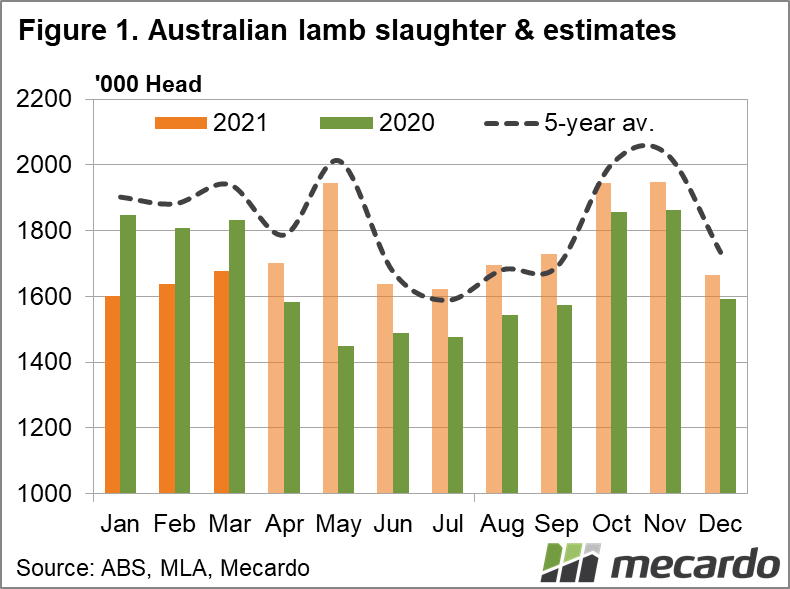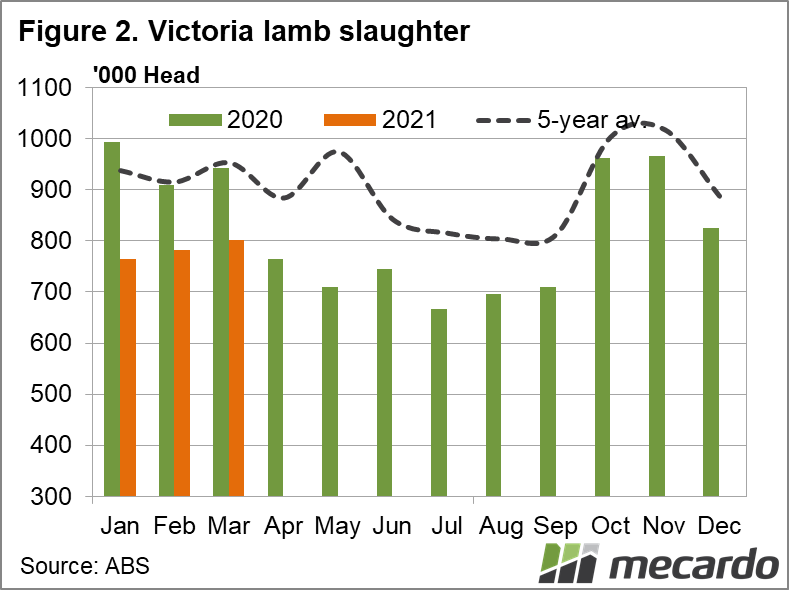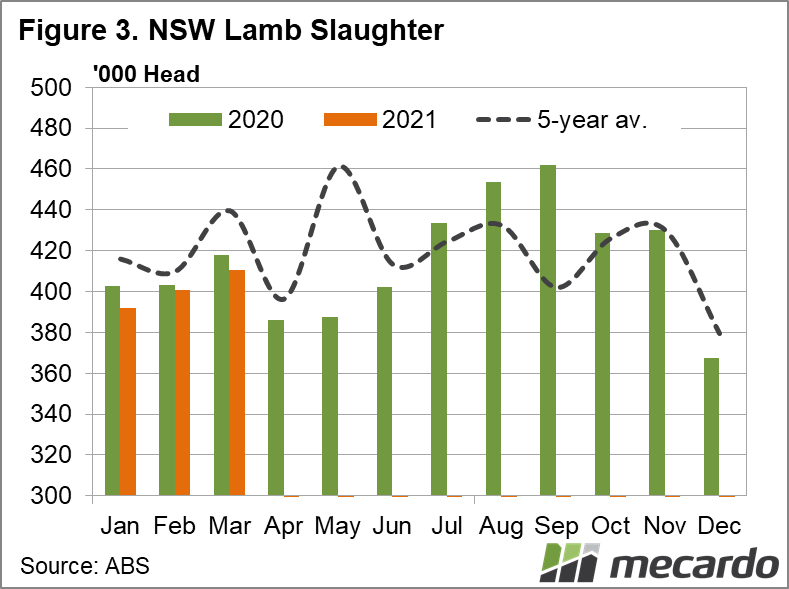Lamb slaughter totals for the first quarter have fallen 10.5 per cent year-on-year, back to levels not seen since 2012. Both the five and 10-year averages show that, with the exception of May, lamb slaughter tracks lower than March volumes through until October, indicating any significant rise in throughput will now have to wait until the spring flush.
Applying average seasonality to the quarterly data, gives us an estimate of how many lambs were slaughtered each month. For the month of March an estimated 1.67 million head were slaughtered, which would also be the lowest level for March since 2012. While this was marginally higher than February slaughter, it continues the lower year-on-year trend experienced so far in 2021, falling 8.5% compared to March last year. This means if Meat & Livestock Australia’s February lamb forecast prediction of an annual lamb slaughter increase of 4% for 2021 is to eventuate, figures will have to lift significantly for the remainder of the year.
In Victoria, the biggest lamb processing state, lamb slaughter totals for the first quarter of 2021 were more than 17% lower than the same period in 2020. In comparison, NSW, which has the second largest throughput, processed only about 1.6% less lambs for the quarter compared to last year.
There has been a rise in lamb slaughter in April and May, according to MLA weekly data, with numbers being higher year-on-year for nine of the past 10 weeks. But if we use the ABS data for January to March of 4.9 million head, and compare with MLA’s February released lamb slaughter forecast of 20.8 million head, another 15.9 million lambs will need to be processed by the end of the year which would look something like Figure 1. This equates to an increase of 8.4% for the remaining nine months.
What does it mean?
The flock rebuild was always expected to not eventuate to increased production until later in 2021, as lambs aren’t produced ready for slaughter overnight. MLA slaughter figures for the year-to-date paint a different picture, only being down 3% year-on-year. However, they are still down, which means a rethink on the annual estimate could be on the cards for the next MLA forecast, released in June. In the short term, the lowest lamb slaughter in nine years for the first quarter bodes well for price support throughout winter.
Have any questions or comments?
Key Points
- Lamb slaughter dips estimated 8.5% year-on-year for March, bringing the first quarter volume down to 10.5% less than 2020.
- Victorian lamb slaughter falls 17% for the quarter, while NSW only dips 1.6%.
- Total lamb slaughter figures have to rise significantly for the remainder of the year to reach Meat and Livestock Australia’s February estimate of a 4% annual increase.
Click on figure to expand
Click on figure to expand
Click on figure to expand
Data sources: MLA, Mecardo




